When you hear the term “strong arms,” you probably think of lean, defined, muscular arms. However, hypertrophy (large muscles) and strength are not directly correlated. That is, bulky biceps (as a result of bicep curls) are truly “beach muscles, which means they do not necessarily serve a purpose other than aesthetics. And if that’s a client’s primary goal, then have him do some work at the preacher bench. But if functional, usable arm strength is the goal, read on.
A strong correlation exists between grip strength and upper-body strength. Therefore, working grip strength exercises can improve arm strength. Furthermore, grip strength is often the limiting factor in some exercises (both upper and total body) such as dead lifts, pull-ups and kettlebell exercises. Thus, arm strength can enhance lower-body strength and power. So, when the following exercises result in forearm and hand fatigue, that’s a sign that they are being performed correctly.
Biceps curls and triceps extensions will result in arms that are defined and strong—but only for movements that mimic the exercises. That’s why single-joint exercises do not necessarily translate to functional (usable) strength. We also hear of NFL quarterbacks having “strong arms,” but their throwing strength is generated from the lower body and translated through the core, through the shoulder, and then to the arm.
Therefore, for clients who want stronger arms, include exercises that engage the rotator cuff, shoulders, core and even the lower body. The following exercises (and their variations) are challenging versions of conventional upper-body exercises.
Awkward Pull-ups
Pull-ups legitimately challenge upper-body strength, as they require strong arms, shoulders, back, and grip. Straight-bar pull-ups, however, are simply the beginning; slight grip changes grip can significantly alter muscle involvement and humble just about anyone. Try these variations on pull-ups to make them more awkward and considerably challenge grip strength:
Straight Bar, Fewer Fingers
Start with four fingers (i.e., monkey grip), then three fingers (no pinkies), then two fingers (index and middle). Complete these variations with standard and reverse (supine) grips. This approach works on an assisted pull-up machine, as well.
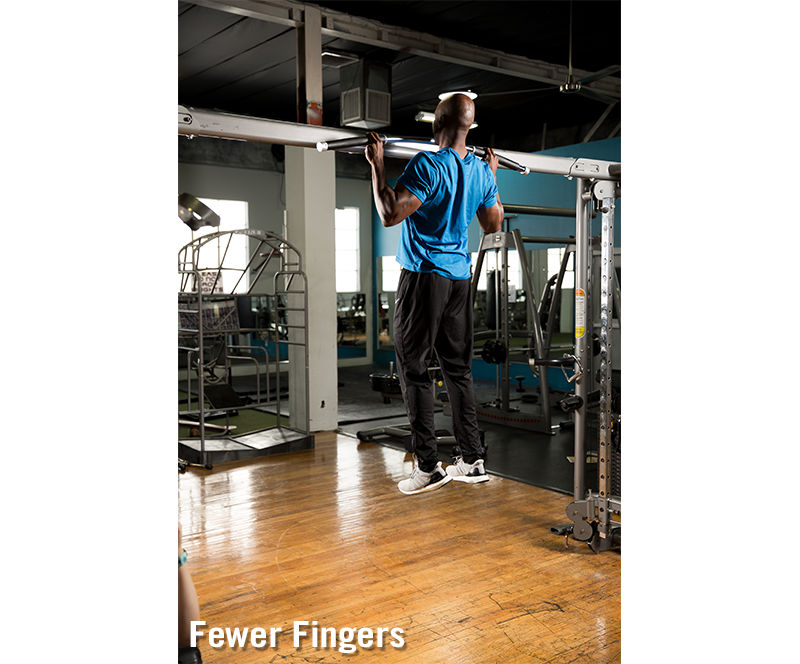
Alternating Grips
Sequence through each of the following positions without dropping from the bar (at least one hand should always grip the bar) for two to five reps each: Standard Grip, Alternating Grip (one hand prone, the other supine), Reverse Grip and Alternating Grip (opposite positions from previous).
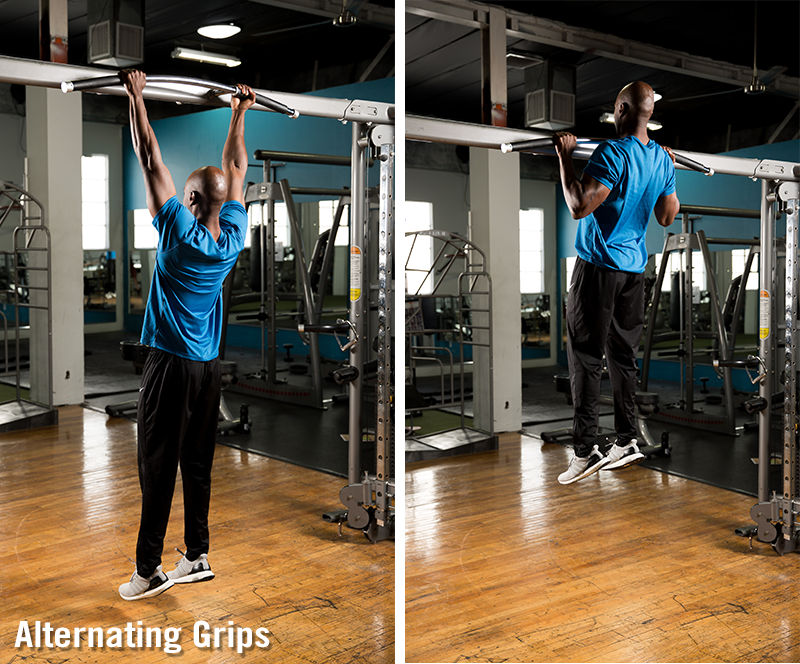
Pull-Up Bar Toys
A variety of pull-up bar equipment is available that is both fun and challenging, including fat grips, sphere/globe grips, cannonball grips, dog bone bar, pinch blocks, grandfather clock, rock rings and climbing wall training boards.
Inverted Pull-ups
For those who cannot quite complete a full pull-up yet, inverted pull-ups challenge the upper body, including the arms, just as well. Use gym rings, climbing ropes or a suspension system.
Level 1 – Both Arms and Knees at 90°
Keep feet flat on the ground and use the legs to assist your pull-up (essentially squatting as you pull).
Level 2 – 1 Arm, Knees at 90°
As with Level 1, keep feet flat on the ground and use the legs to assist your pull-up; grip the handle with only the left hand. During the descent, extend the left arm and rotate the chest to the right. As you pull yourself up (again with the assistance of the legs) rotate the torso back to parallel and keep the left elbow close to your side.
Level 3 – 1 Arm, Legs Straight
Complete the same exercise as Level 2, but straighten out the legs and place the weight on the heels.
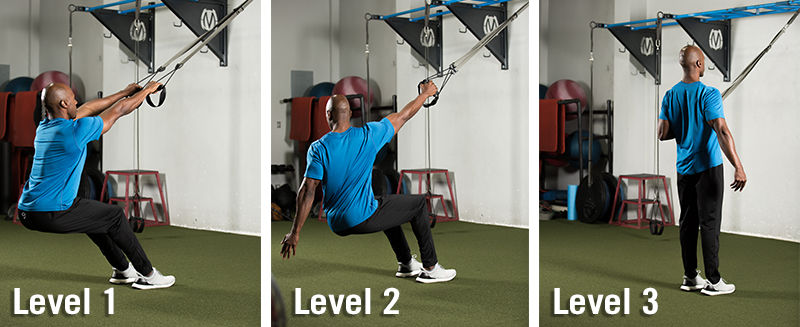
Large Medicine Ball Circuit
Gripping a large medicine ball while pressing and rotating not only fires up the forearm muscles, but the biceps as well. These exercises are less about the weight and more about the awkwardness of the movements. Try the following circuit with a large medicine ball (a bumper plate or small sandbag works well, too). Start the circuit in a shoulder-width stance and complete three to six reps of each exercise:
Alternating Press From the Hip
Reach the ball to just behind the left hip as you partially squat. Stand up tall and fully extend the arms at chest height. Squat down as you reach the ball to the right hip and then press to chest height again (three to six reps on each side).
X-Chop
Reach the ball to just behind the left hip as you partially squat. Stand tall and rotate the core as you reach the ball over the right shoulder (bend the elbows as you would in a golf swing). Squat down as you reach the ball back to your left hip (three to six reps on one side before switching sides).
Waist-to-overhead Press
Curl the medicine ball from the waist, to the chest, and then overhead in one, smooth motion. Control the weight back to the chest and then to the waist.
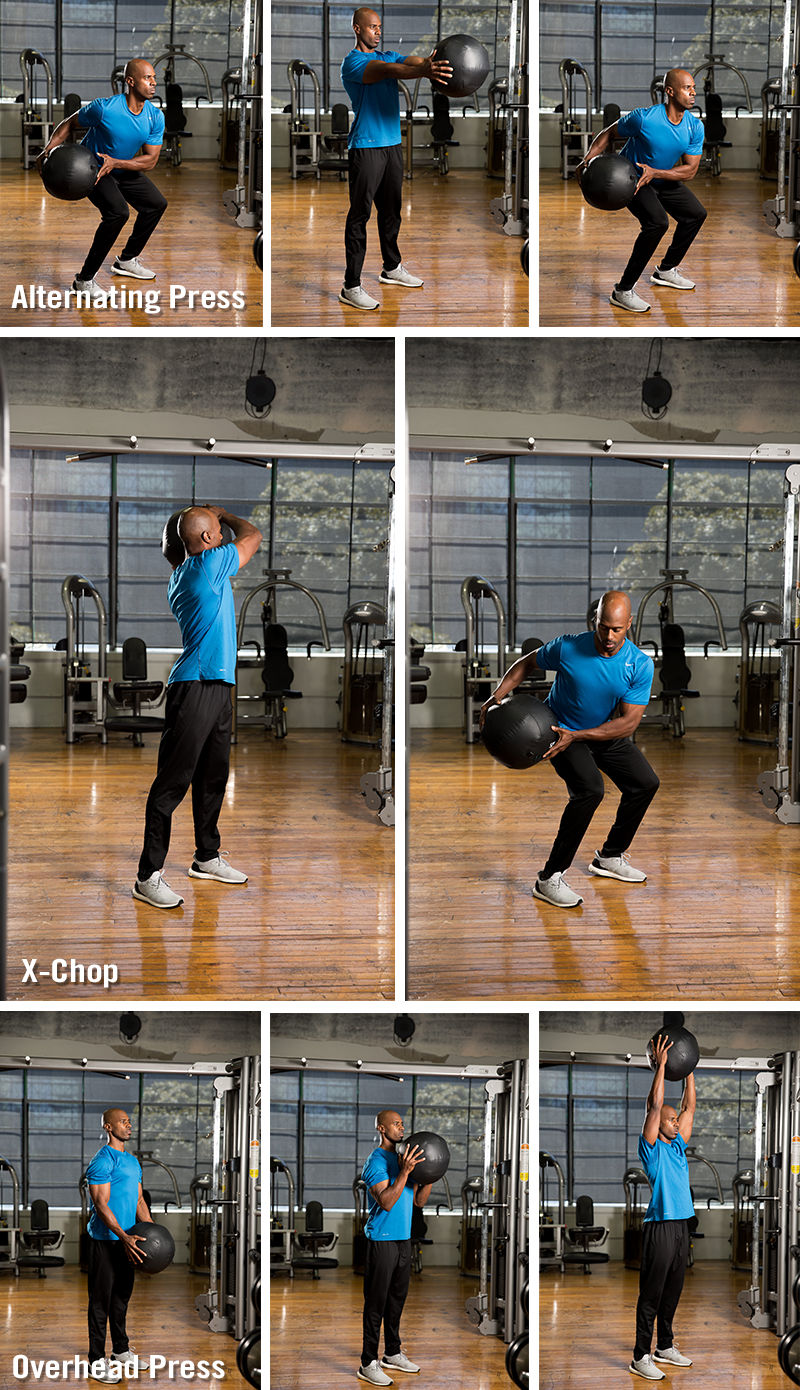
Gunslingers
This exercise uses the lower extremity and core to initiate the movement, but requires the arms to slow down the movement.
Start in a split stance with the right foot forward and a dumbbell in the left hand. Bend the hips and knees (quarter squat) and bend the left elbow so that the left hand is near the hip (in the “holster”). Stand up tall and punch the hand directly in front of you to shoulder height. Hold the weight for a full count and then control the weight all the way back to the holster as you bend the hips and knees again. Complete three to six reps using each of the following variations on each arm:
Neutral Grip
Maintain a neutral grip from the hip to full extension.
Supination
Begin with a neutral grip and rotate the palm upward as you extend.
Pronation
Begin with a neutral grip and rotate the palm downward as you extend.
Additional Variations
Switch your foot stance (dumbbell in the hand of the forward foot). Or for a real biceps crusher, complete the gunslingers while holding a kettlebell.
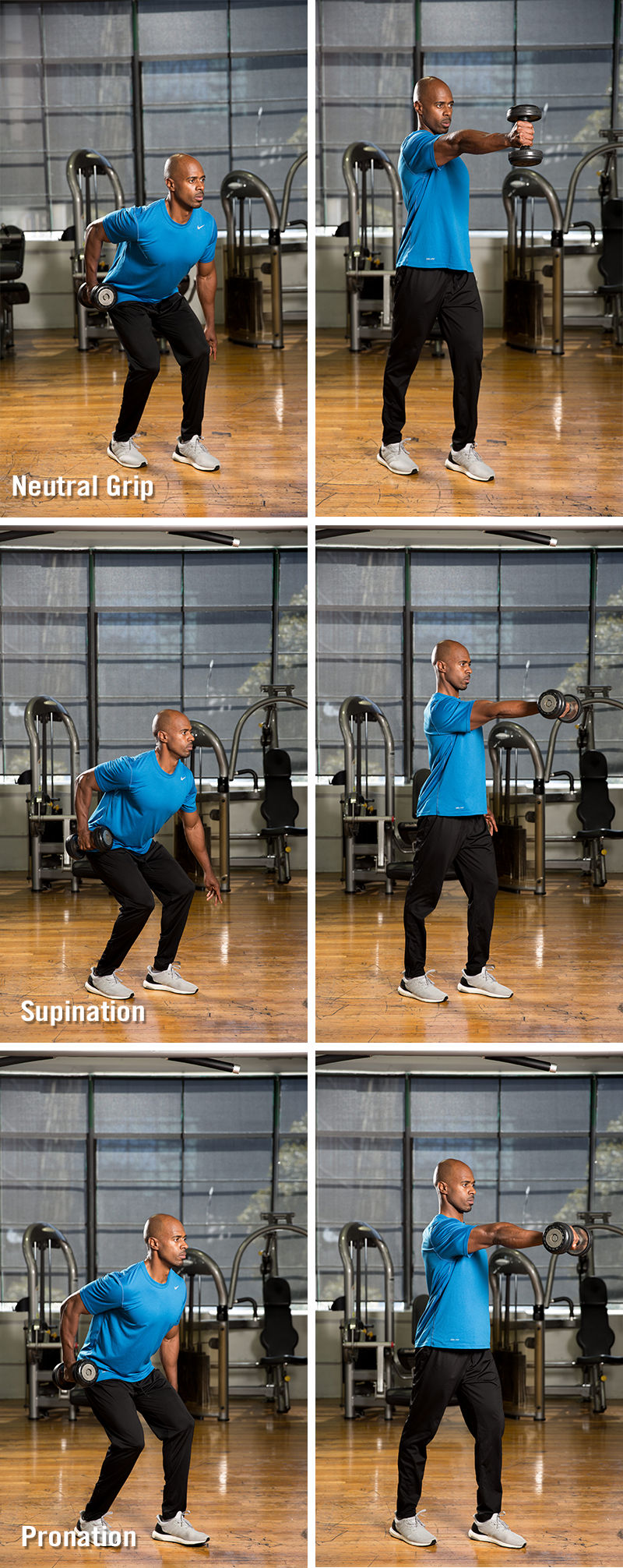
Strengthening arms without completing a single biceps curl, triceps extension or push up is completely feasible. Simply control a weight through a full range of motion—pushing, pulling and rotating in multiple directions. The more awkward the exercise feels initially, and the more tired the forearms become, the better the exercise is for developing true, useable arm strength.
Deliver the individualized programs people need to adopt long-term, healthy behaviors with ACE’s Personal Trainer Certification.




 by
by 






 by
by